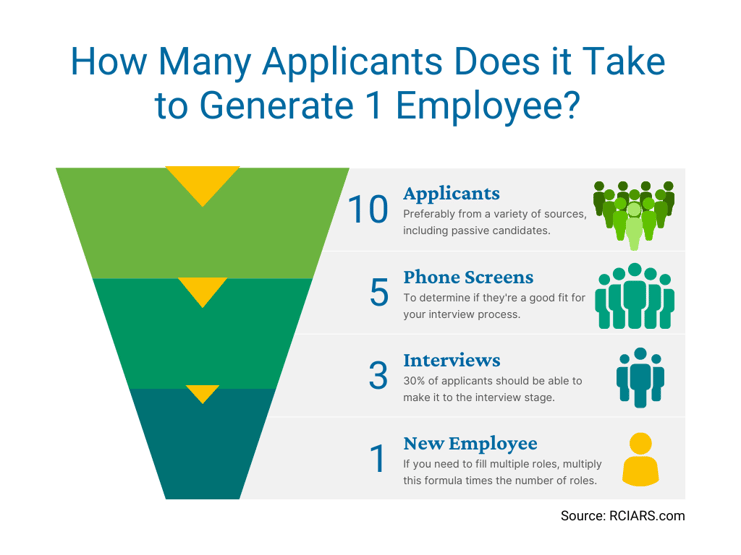
There’s no doubt about it: job boards are an incredibly easy way to reach a broad audience to fill open positions within your company. And while they do have their place, job boards are merely one tactic — one that you can’t rely upon entirely to get the best set of candidates possible for your jobs.
Does this mean you have to ditch job boards altogether? No. But have a look at how you’re using them. If it’s for all of your jobs and is used as the primary recruiting method, you’re probably short on qualified candidates. However, job boards can work great for certain segments of workers. It’s time to look at using job boards more strategically.
Related Read: Alternatives to Indeed Job Postings for Employers
What are your other options for identifying high-quality and qualified candidates? If you want to attract top talent, you’ve got to use several proven recruiting methods. Yes, this will take creativity, commitment, and shrewd thinking from your hiring team, but the effort will be worth it. The more varied the strategies, the greater the chances of grabbing the attention of the right people and connecting with them.
Before You Expand Your Recruiting Strategies, Do This:
Consider Who, What, Why, Where, and When?
How many hires is my internal recruiting team responsible for filling? If it’s just a few, a singular job board approach might work depending on the type of position and level of experience needed. But if it’s more than that, you’re going to need to get your eggs out of one basket so you can get a consistent flow of potential candidates. If you’re like most companies, you’re going to need to fill quite a few roles over the next year. To do that, you need quite a few candidates. How many applications do you need to get these positions filled in a reasonable amount of time?
Here’s a formula you can use.

If there are 10 new hires needed, you must have at least 100 applications to get to this result. And that is a minimum. Most companies aren’t getting that volume of qualified applicants using job boards for this to be the primary source of candidates.
Related Read: 4 Reasons Post & Pray Recruiting Won’t Work
1. Short-Term Recruiting Strategies
Things happen. It’s common for companies to suddenly place a big request on the recruiting team to hire a lot of people for a lot of different positions right now. Yes, you can post the job online to start a candidate flow. But you’re going to need more than that to get the right people in place in the timeline that’s been set. Using a third-party to help you fill the roles with a diverse set of highly qualified individuals can be key to accomplishing the task at hand. This can include:
Executive Search Services
If you need to hire high-level team members, it’s a good idea to work with a company that specializes in this area. They will help you shorten the process and get a good set of candidates in front of the right people.
Temporary Agencies
This works best if you need people who may not be fully qualified, but can get the work done while determining if they’re a good long-term fit. Or, in situations when people are needed immediately, a temporary agency can usually help out, giving your recruiters a longer runway for finding “perfect fit” candidates for the roles.
RPO
A recruitment process outsourcing company can help you in several ways, from identifying potential executives to filling dozens (or hundreds or thousands) of positions. These can be of any level, from entry-level to executive.
An RPO will be able to access candidates that fit your candidate profiles quicker than other options. Yes, this one will cost you a little more, but in the end, you’ll save money by hiring quality candidates quickly -- lowering your cost-per-hire and time-to-fill.
Do You Really Need Third-Party Help With Recruiting?
You might be thinking, “I already have an in-house recruiting team, why would I bring in extra people to help?” Well, besides freeing up some time so they can focus on other important tasks, third-party recruiting and/or sourcing experts offer some specific advantages that extend past what your in-house team is capable of providing.
External firms such as this have extensive candidate relationships that can give you a unique competitive advantage. Not only does it expand your candidate pool, but it can also expedite your hiring process and ultimately help find the best talent for your company.
Related Read: Recruitment Process Outsourcing vs In-House Recruiting: Can You Use Both?
2. Mid-Length Recruiting Strategies: Not Short Term but Also Not Long Range
Social Media Networking
The tactics in a mid-range strategy require some time to build up a candidate’s interest, but they work! One of the obvious opportunities is using social media, especially Linkedin. By developing your network of contacts, and the company’s audience, you’re able to have conversations with people who might be a good fit for the jobs you need to fill.
This doesn’t mean stalking them on social media but rather engaging in conversations related to their industry. This is often done in Linkedin Groups, where you can see how the individual communicates and explains concepts related to their area of expertise.
Cold-Calling
This is an outbound type of recruiting that you may not have used in the past, and you may not have the internal team to make it happen. That’s why cold-calling is often an outsourced activity to an organization with experience in finding the right people to call (out of the blue) based on the potential candidate’s experience. The initial call is to see if they’d be interested in learning more about the job and engage them afterward to hold their interest using email, texts, and additional calls. The key here is identifying the right people to contact and the right way to stay in touch with those who show interest.
This is one of the primary ways you can access passive candidates – those who aren’t actively looking for a job but would have a conversation about your position that matches their skills, experience, and/or education.
Expand Your Candidate Sourcing Strategies
Focusing on the inbound sourcing opportunities, what are you doing to promote your jobs? This should be more than a “boosted” job posting on a job board. Are you running Google Ads, social ads, SEO campaigns, and/or programmatic advertising to find people?
3. Long-Range Recruiting Strategies You Shouldn’t Overlook
What are you doing as a company to always stay in front of the candidates you need? Success in this area means that you will become less reliant on other tactics. It will also reduce the scramble when there are short-term needs. Building out and investing in the following areas will help you with developing a solid recruiting strategy:
Employer Branding
Start here. Your employer brand is the outward expression of who you are and what makes you special to work for. This is different from your customer-facing brand. If you haven’t spent time here in the past, it’s a good time to start. Potential employees want to know why they should choose you over someone else, and an authentic brand will be a good part of what provides them with that information. Remember to consider your social media presence and your career website when you evaluate and update your employer brand.
Employee Referral Programs
Look at how you can develop employee referral programs. This can be a great source of candidates!
College Recruitment Plans
If your positions include those who are recent college graduates, this is something to consider. What would make a new grad want to work for you over another company? To get the best of the best, you’ll need a solid communication strategy for this audience.
Employee Retention Plans
These are usually outside of recruiting’s responsibilities, but they’re critical. Having a plan for retaining the employees you have and showing potential hires that your employees like to work at your company goes a long way. Discuss this with the HR team to see what you might have now or what you can build, so you can use your employees as a great tool for referring people they know.
Past Employee Re-engagement
Among the people who have left the company, do you have positions they would potentially be interested in now that they’ve advanced in their careers? Talk to them!
Creating an Effective Recruitment Strategy
There are a few things you can do to help ensure you create an effective recruitment strategy for your company.
- Identify who you really want to hire. If you don’t have candidate profiles created already for each role, it’s time to do it. This will drive your job descriptions that you post and/or share with a third-party to help with finding the right people.
- Review your current strategy. In what ways is it working? How can it be improved? Take a look at what you currently have in place, making a list of what processes and procedures need to change and which ones you want to continue to use. The goal is to identify what other strategies would be more efficient and effective for meeting your specific needs.
- Set a reasonable timeframe. Get an idea as to when you expect to fill the open position and then work backward from that date, establishing a realistic range for implementing your recruiting strategy. If you try to short-circuit it, you’re likely to get candidates who aren’t as high quality as what you would get if you spend a little more time in the recruiting process.
- Estimate a general budget. Recruitment strategies vary in cost, and how much you spend will depend on the specific needs of your company. Some will cost more, some less. Familiarize yourself with the costs of the various recruiting strategies, including how much it costs to post your open positions on job boards. Once you determine the general costs involved and what you’re willing to spend, it will greatly help in setting a budget for all of your recruiting cycles.
Once you’ve done all of this, you can start to use several of the tactics we’ve discussed.
Related Read: Can’t Find Employees? What You Can Do To Generate Quality Candidates
If you’re not diversified in your recruiting tactics, you’re likely to find fewer candidates and, among them, even fewer who are qualified. Make sure that you are taking tactics from short, middle, and long-term strategies so that your pool doesn’t dry up and leave you desperate.
Need Help Resetting Your Recruiting Strategy?
Getting this part right is critical. If you’re not familiar with some of the approaches, let’s talk. We can help you with inbound and outbound recruiting tactics that will help you achieve your short, mid-term, and long-range goals for a strong recruiting program.





